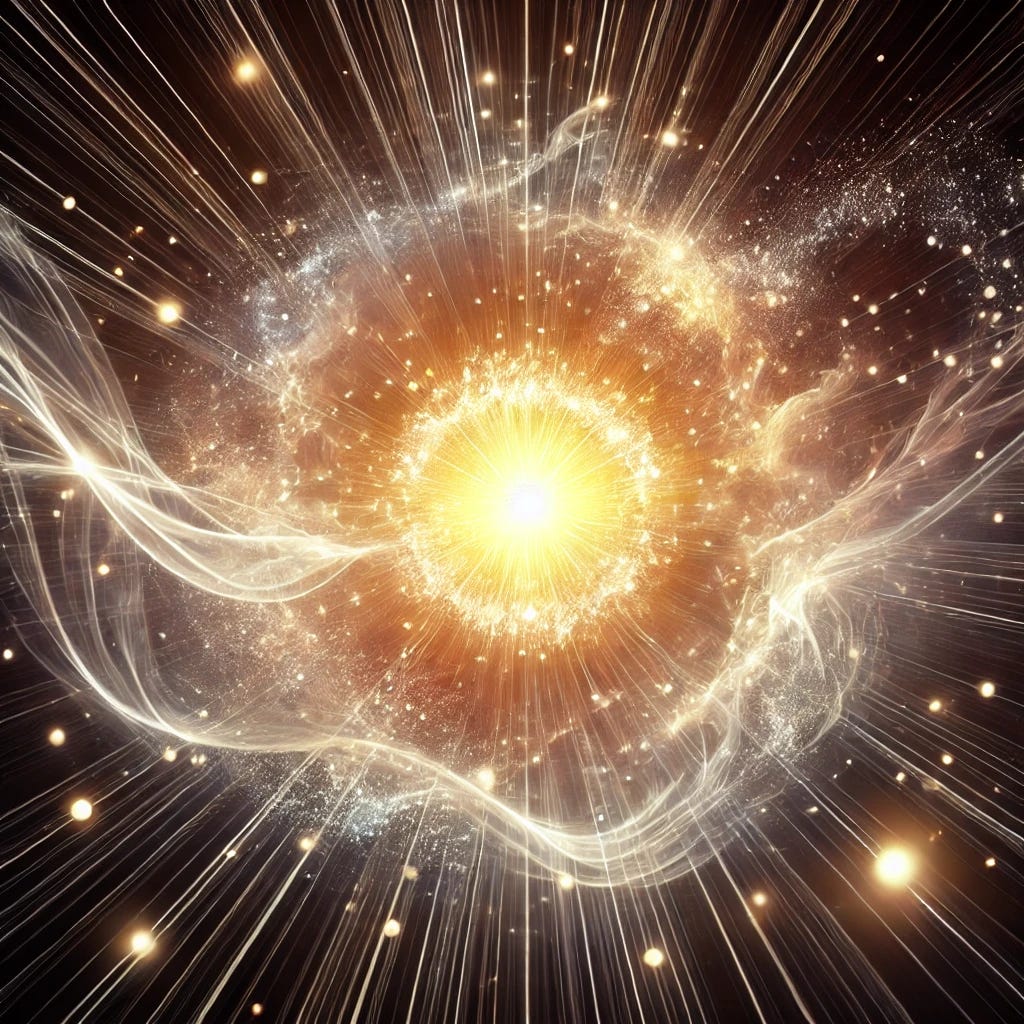Light, in both a physical and metaphysical sense, is the foundation of existence. From ancient spiritual teachings to modern quantum physics, light has been seen as the essence from which all things emerge. The concept that “everything we see is but thickened light” offers a profound lens to understand the unity of matter, energy, and consciousness. Through the New Thought perspective, this idea becomes a powerful framework for exploring the relationship between the physical world and the spiritual realm.
Light as the Source of Creation
At the heart of many spiritual traditions is the recognition of light as the principle of creation. In the New Thought tradition, this aligns with the belief that all material forms are manifestations of a universal energy or divine mind. Light is often considered synonymous with life, awareness, and the creative force that shapes reality. Scientific understanding reinforces this perspective: photons, the fundamental particles of light, are the quanta of electromagnetic energy, essential to life as we know it (Photon - Wikipedia).
Photons—massless and eternal—travel across space and time, illuminating the universe and making vision possible (Wave-Particle Duality - Britannica). This dual nature of light, as both wave and particle, mirrors New Thought principles. Spirit and matter, often seen as opposites, are unified through light. Spirit is the infinite wave, flowing and unbound, while matter is the particle, a condensed expression of that same energy. Light, then, becomes the bridge between the unseen and the seen, the eternal and the temporal.
Thickened Light: Matter as Condensed Energy
“Everything we see is but thickened light” encapsulates a profound truth about the nature of reality. Matter, as we understand it, is energy slowed down and made tangible. This idea resonates deeply with New Thought teachings that physical reality is not separate from spiritual energy but an expression of it. The material world, in all its diversity, is light in a denser form, a tapestry woven from the same universal threads.
This perspective shifts how we view our surroundings. When we understand that all matter—from the smallest grain of sand to the vastness of galaxies—is fundamentally light, we begin to see the interconnectedness of all things. The physical world becomes less a realm of separation and more an intricate, luminous web of unity. Such a realization fosters a sense of reverence and awe for existence itself.
Photons and the Quantum Nature of Existence
Photons, as the smallest units of light, offer a glimpse into the quantum nature of reality. They exhibit both wave-like and particle-like behaviors, embodying the principle of duality that is central to both physics and metaphysics. In the New Thought tradition, this duality can be seen as a metaphor for the interplay of consciousness and form.
Photons are also remarkable in their perpetual motion and lack of mass, embodying qualities that align with spiritual concepts of boundless energy and infinite potential (Photon Energy and Momentum - Science Facts). They remind us that the essence of existence is dynamic and ever-evolving. From a New Thought perspective, photons symbolize the divine spark within all things—an eternal source of creativity and illumination.
Light, Perception, and Consciousness
Human perception is intrinsically tied to light (How Light Enables Human Vision - National Eye Institute). Everything we see is a result of light interacting with matter, revealing the forms and colors of the world around us. This reliance on light for vision extends beyond the physical. In New Thought, light is a metaphor for awareness and understanding. Just as physical light illuminates the external world, the “light within” illuminates our inner landscape.
When we recognize that light is the principle of all things, we begin to see ourselves as co-creators of reality. Our thoughts, much like photons, carry energy and potential. By focusing our consciousness on higher ideals—compassion, creativity, and unity—we align with the universal flow of light and contribute to the illumination of the collective.
Practical Applications of Light as a Principle
Embracing light as the essence of existence invites practical ways to integrate this understanding into daily life. Meditation, for example, can be a practice of connecting with one’s inner light, fostering clarity and peace. Visualization techniques allow us to imagine ourselves as beings of light, radiating positivity and attracting harmonious outcomes.
Another practical application is mindfulness, where we consciously recognize the luminous nature of everything around us. By shifting our perspective to see the unity of light and matter, we cultivate a sense of gratitude and interconnectedness. This practice not only enhances our well-being but also inspires us to act with greater kindness and compassion.
Conclusion
Light, as the principle of all things, bridges the gap between science and spirituality, the physical and the metaphysical. It is both the source and the essence of existence, uniting energy and matter, thought and form. Through the New Thought perspective, light is not just a physical phenomenon but a profound symbol of our creative and divine potential.
By embracing the idea that everything we see is but thickened light, we align ourselves with the universal energy that sustains and connects all things. In doing so, we illuminate our path toward greater understanding, harmony, and fulfillment, embodying the light we wish to see in the world.




